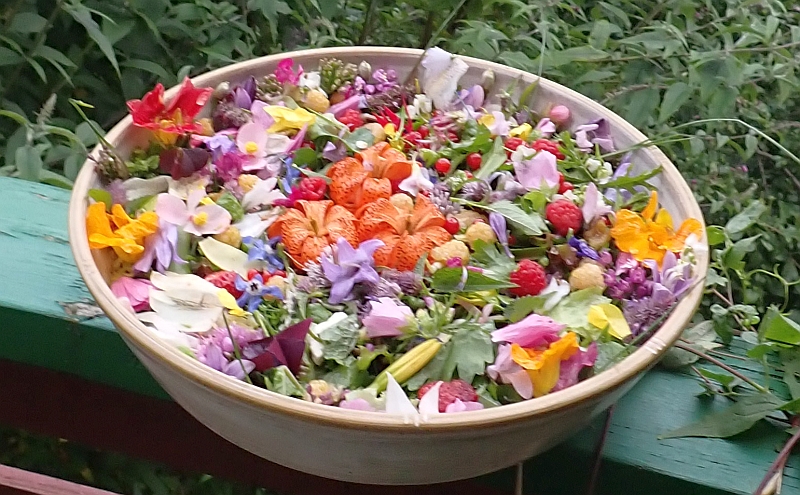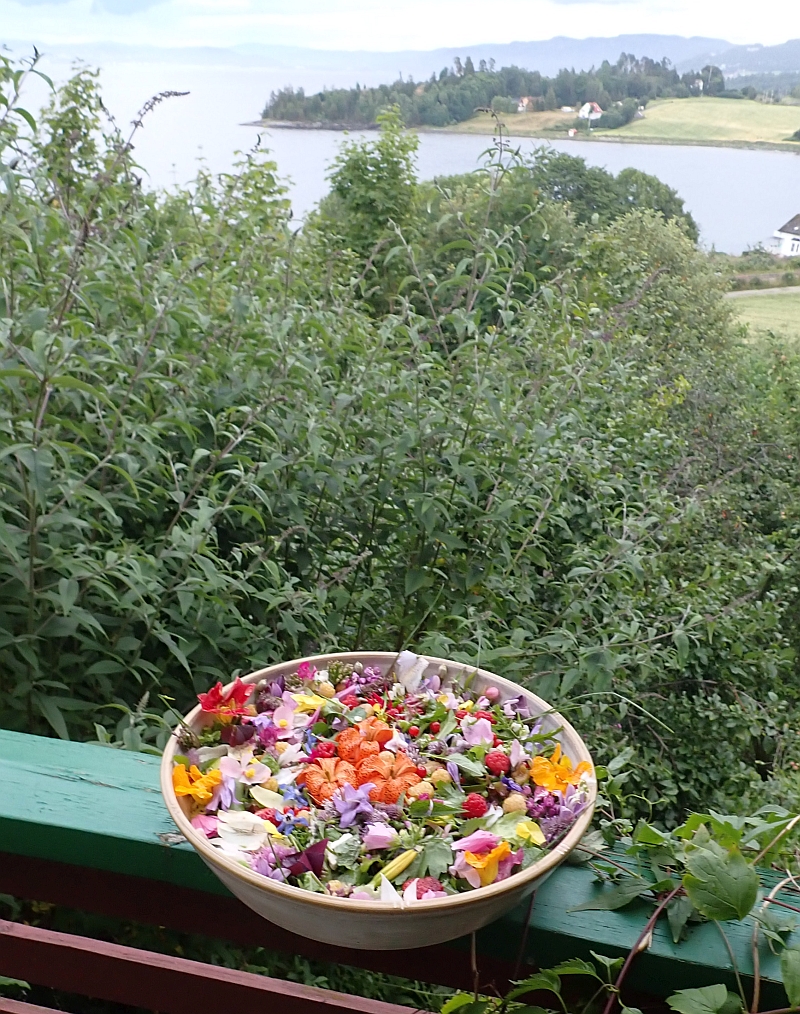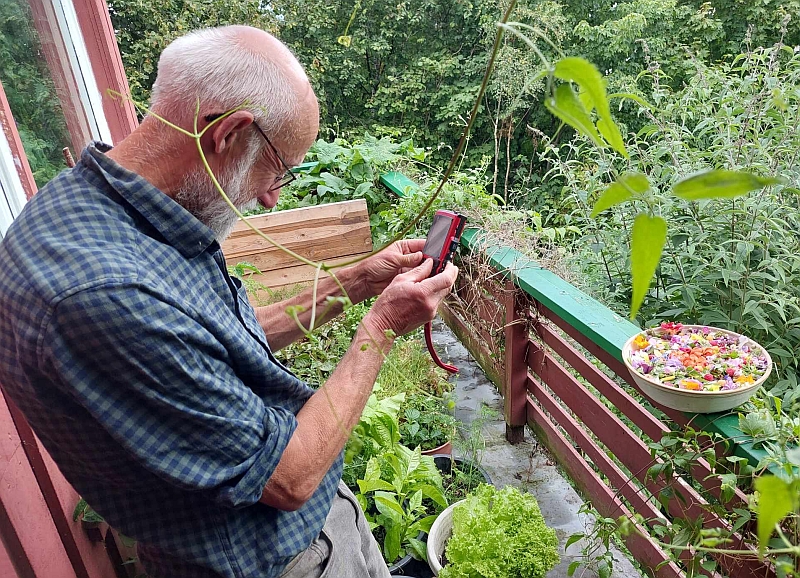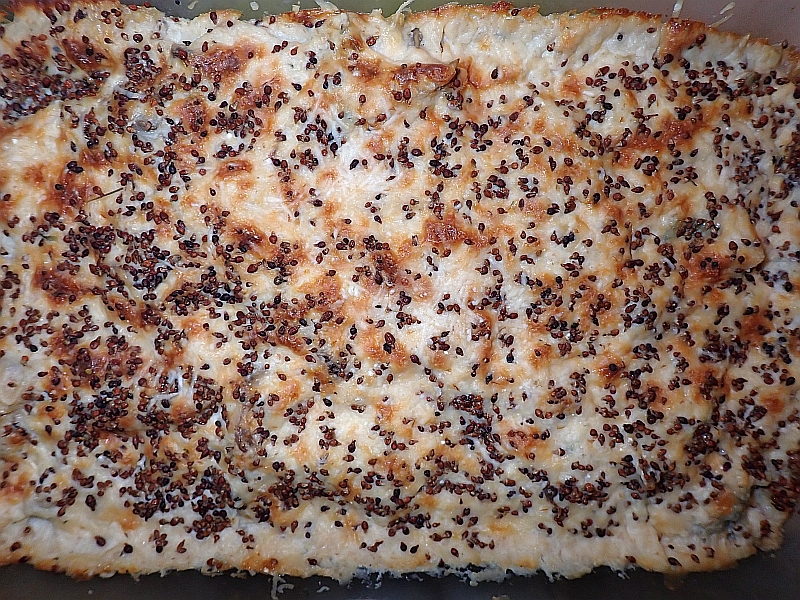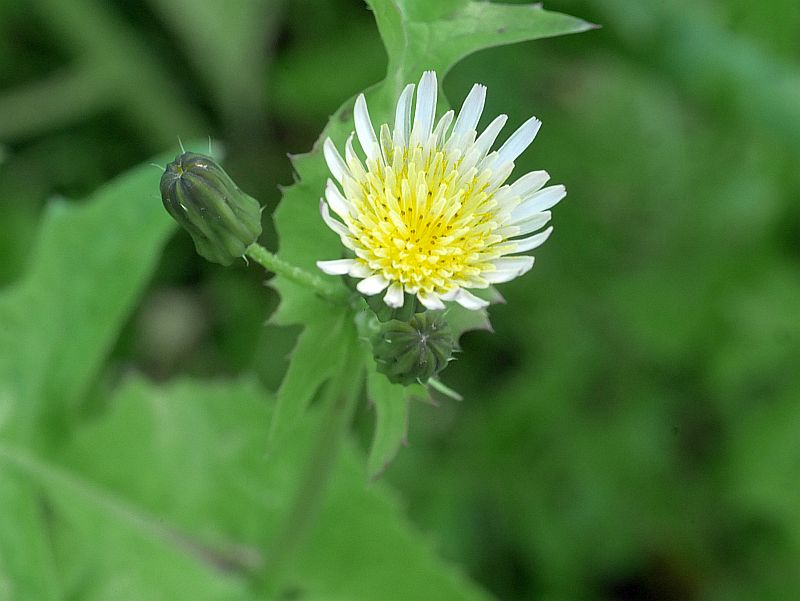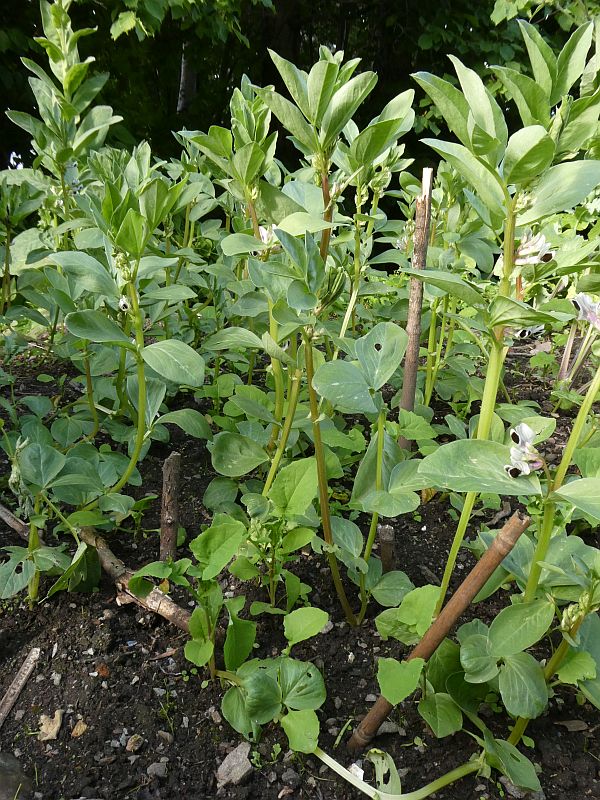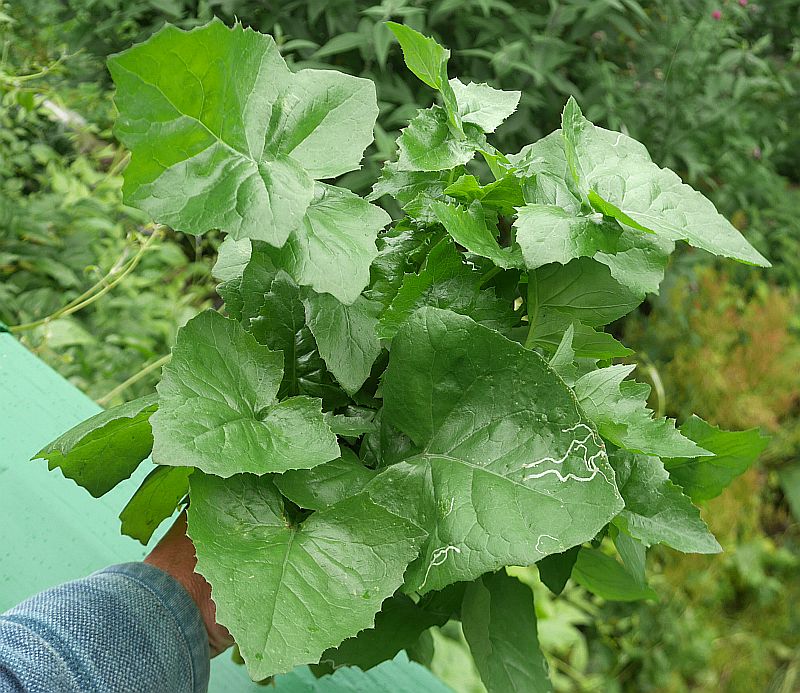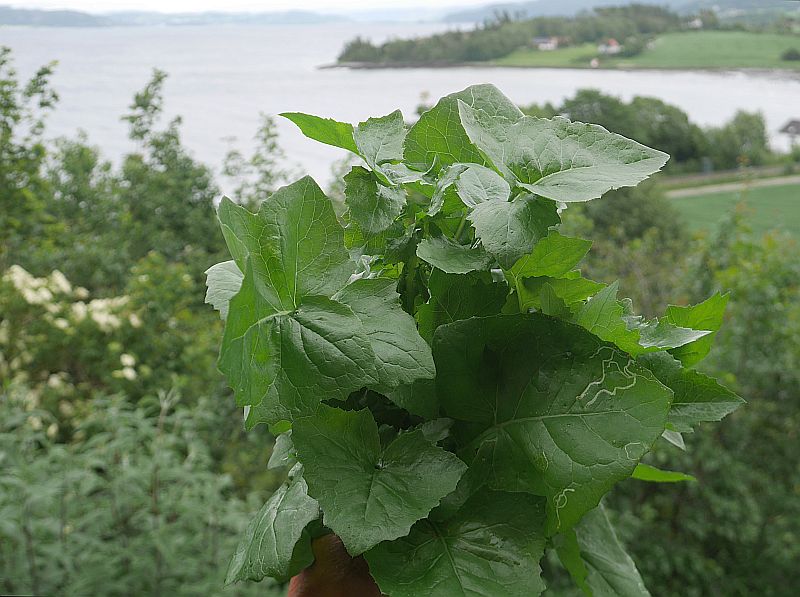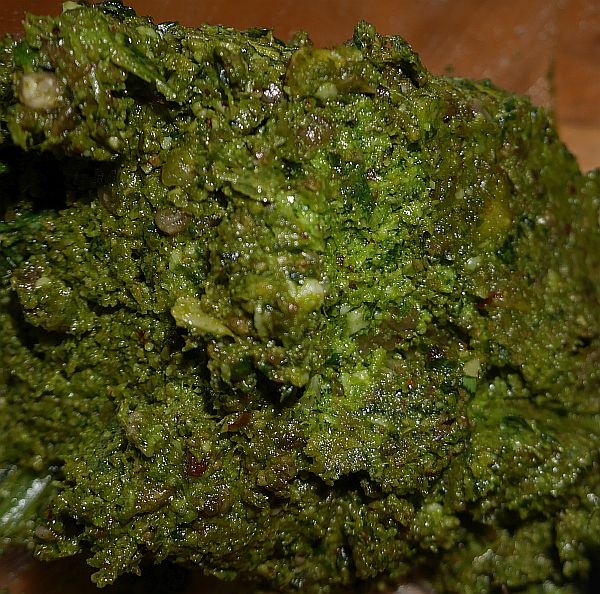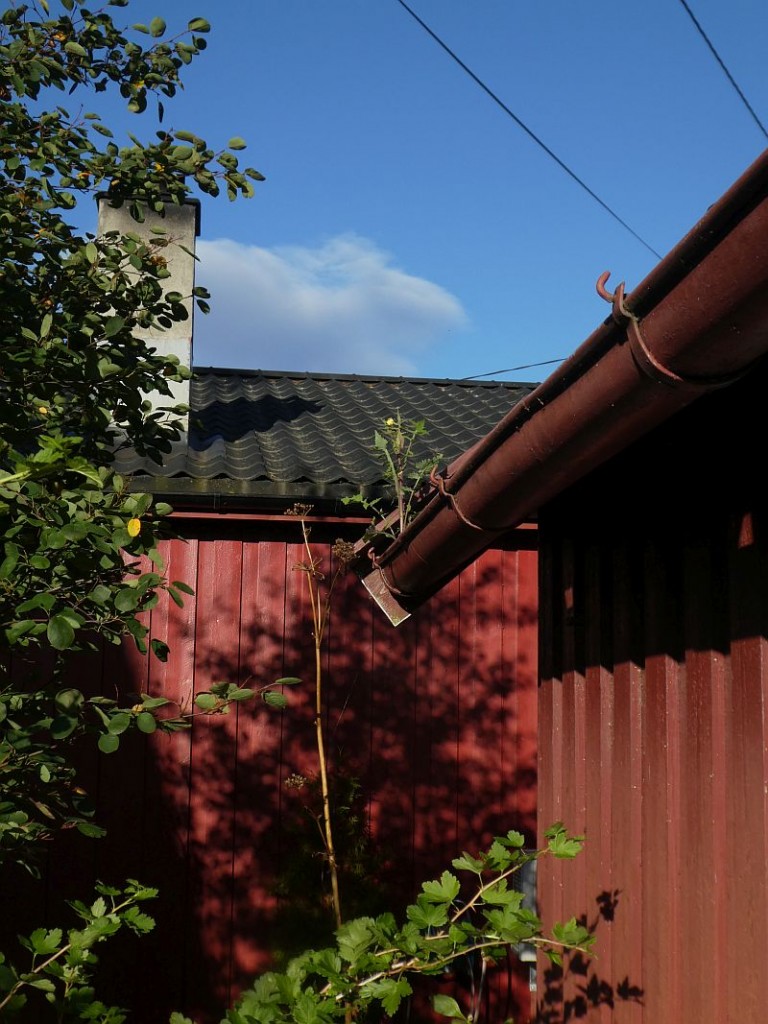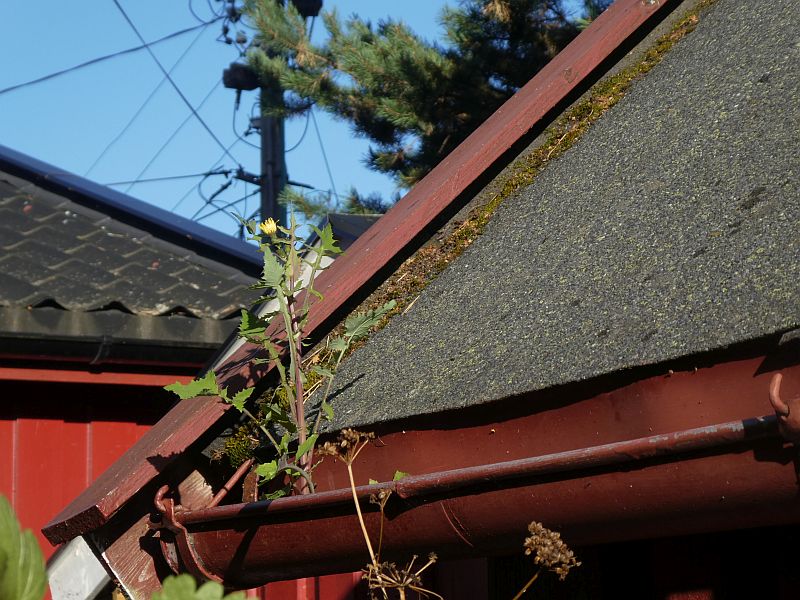Before I go any further, I should say that 2/3 of my cultivated area is almost 100% no dig (perennials is the ultimate no dig) as I grow perennial vegetables, fruit, berries and nuts. I rarely dig in these areas at all as I only plant once and don’t disturb the plants for years. I do still grow annuals on my raised beds…beds which are about 1.2m wide and are never walked on. I add compost on most of the beds each spring and lightly dig over to incorporate the compost and, surprising to most folks, to encourage the weeds to germinate.
There’s one weed in particular that I’m encouraging, Sonchus oleraceus (common sow thistle / haredylle). As I’ve written before (also in the 12 page essay in my book on the sow thistles), this is my favourite summer leafy green vegetable which I eat most days from July to September. It grows quickly and is actually more nutritious than standard greens. It’s also rich in antioxidants and I love it’s slightly bitter taste which goes well with pretty well any dish I might prepare, always mixed with other “vegetables of the day”. We ate it tonight in a pea soup and, yesterday, in a green pasta sauce and the day before that in pizza…
Yesterday, I weeded my second crop broad beans which were growing in a sea of “weeds” and as I weed I selectively allow the sow thistle to grow on between the beans and on the edge of the bed (you can think of this as “WEEDING YOUR WEEDS”). The video and pictures show the broad beans with the young self-seeded sow thistle plants in between. These will grow up quickly in the next 2-3 weeks and I harvest just before they start flowering. This doesn’t interfere with the growth of the broad beans which take much longer to mature to harvest. Later on, the next wave of sow thistle will be allowed to grow on the edges of all the beds where it doesn’t interfere with the main crops, a method used by the Maori of New Zealand which inspired me to introduce Sonchus oleraceus to my garden. Eating your weeds can significantly increase your yield. I must admit that I love weeding, a quiet time in the garden observing wildlife around me…….similarly, I love washing up, both quiet times contemplating. There’s even a name for weeds that are cropped…it’s a cryptocrop. Cryptocropping has been practised by many other peoples around the world.
Any nutrients or soil which might be washed out from my annual beds during periods with naked soil ultimately end up in my forest garden and perennial plantings below, so are not lost! However, there isn’t much loss as my soil is high in humus after over 35 years adding compost!
I’ve tried no dig in the past, but I would need a much bigger area to produce sufficient material for mulching and I also found that in my shady cool garden the soil heated up much too slowly and slugs were also a bigger problem.
In the video, I zoom into the low growing young sow thistle plants between the taller broad bean plants:


 Broad beans (bondebønner) and swiss chard (mangold)
Broad beans (bondebønner) and swiss chard (mangold) 

 Shallots (Finnish heritage variety) which were harvested in September 2022 are still looking good:
Shallots (Finnish heritage variety) which were harvested in September 2022 are still looking good: Sonchus oleraceus (common sow-thistle / haredylle), probably my most used veg at this time of year, even though most consider it a weed! WEEDS ARE TO FEED!
Sonchus oleraceus (common sow-thistle / haredylle), probably my most used veg at this time of year, even though most consider it a weed! WEEDS ARE TO FEED!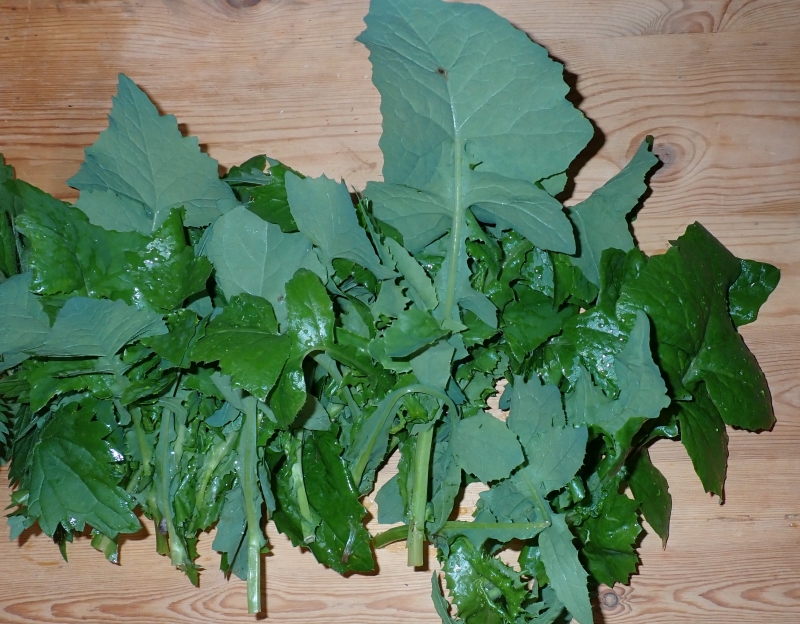
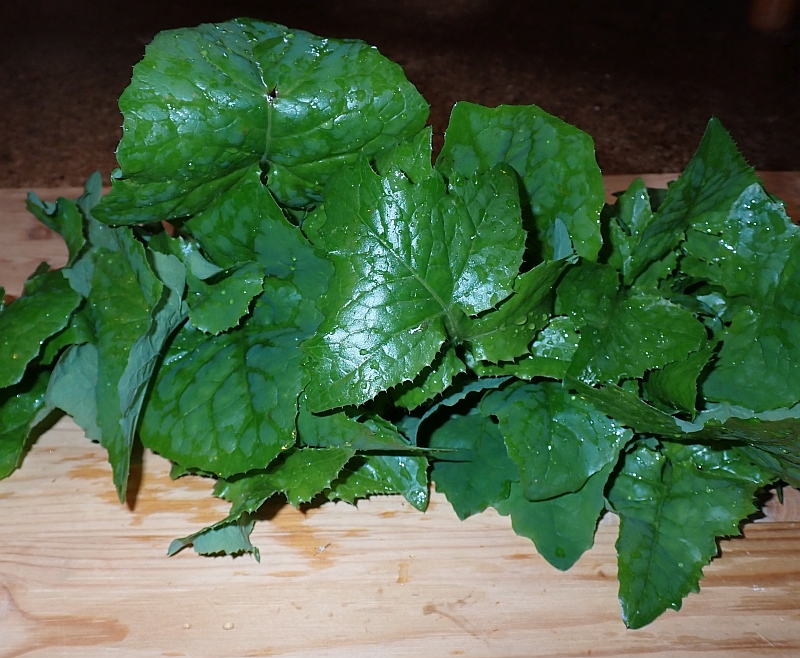

 Even the guest bed is in use for drying seed! Here is the 2023 crop of golpar (Heracleum spp.) seed :) :
Even the guest bed is in use for drying seed! Here is the 2023 crop of golpar (Heracleum spp.) seed :) :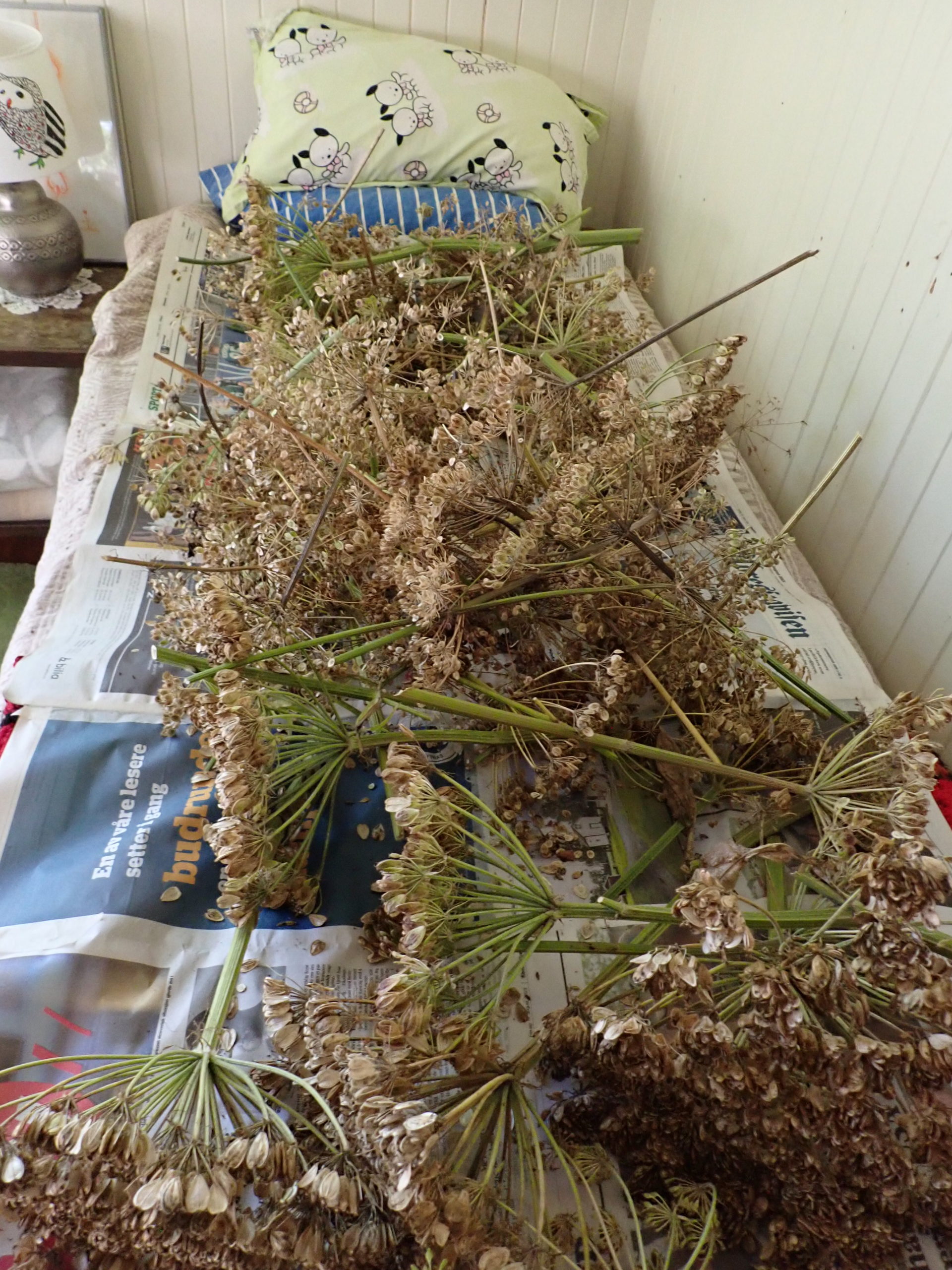 Otherwise, we used courgette, nettle, chili and Hitra Blue organic cheese!
Otherwise, we used courgette, nettle, chili and Hitra Blue organic cheese!
